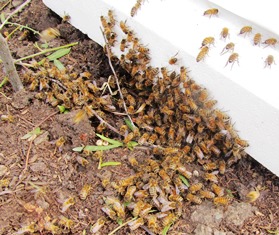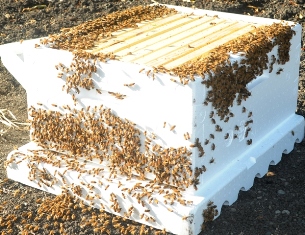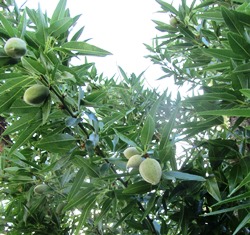Beekeepers File Suit to Ban Two Pesticides
Neonicotinoid pesticides pose a high risk to honeybees, a belief that has beekeepers aligned with environmentalists and scientists and is the basis of a lawsuit filed against the Environmental Protection Agency.
According to the EPA’s website, several European countries have suspended or banned the use of neonicotinoids (commonly referred to as neo-nics) for causing acute poisoning of honeybees. However, the EPA denied the request posed in a legal petition by environmental organizations and beekeepers in 2012 here in America to ban clothianidin, an insecticide classified as a neonicotinoid.
Recently, the Center for Food Safety, on behalf of commercial beekeepers and environmental organizations, filed suit against the EPA seeking to force the EPA to suspend the use of the insecticides clothianidin and thiamethoxam. Both insecticides are are neonicotinoids, a class of chemicals that harm the nervous system of bees.
Healthy bees are vital for the pollination of California’s almond crop (the state produces roughly 80 percent of the world’s almonds) but also bees are necessary for the pollination of roughly 30 percent of other crops in the United States.
When the almond orchards of California need honeybees for pollination, they turn to the commercial beekeepers, many in the Midwest. It is estimated that more than half of the nation’s honeybees are shipped in their hives here for the almond blooming season–possibly the nation’s largest pollination event. This year, there was a shortage of bees.
With higher than usual die-offs of bees and colony collapse disorder (in which, bees disappear or die) on the rise, beekeepers and scientists have long suspected that the chemicals in certain pesticides play a role. Exposure to chemical residue in nectar, pollen, and dust (from treated seeds) not only hurt the honeybees, but some say also affect other beneficial insects.
The EPA states on its Website <http://www.epa.gov/opp00001/about/factsheets/protectbees_fs.html> that it is working toward pollinator protection on several fronts, including through regulatory, voluntary, and research programs.
Although the EPA is re-evaluating the use of neo-nics, the agency’s re-evaluation process will not be completed anytime soon–it can take years. That could be bad news for the nation’s beekeepers and California’s almond growers.
 Facebook
Facebook Goodreads
Goodreads LinkedIn
LinkedIn Meera Lester
Meera Lester Twitter
Twitter






